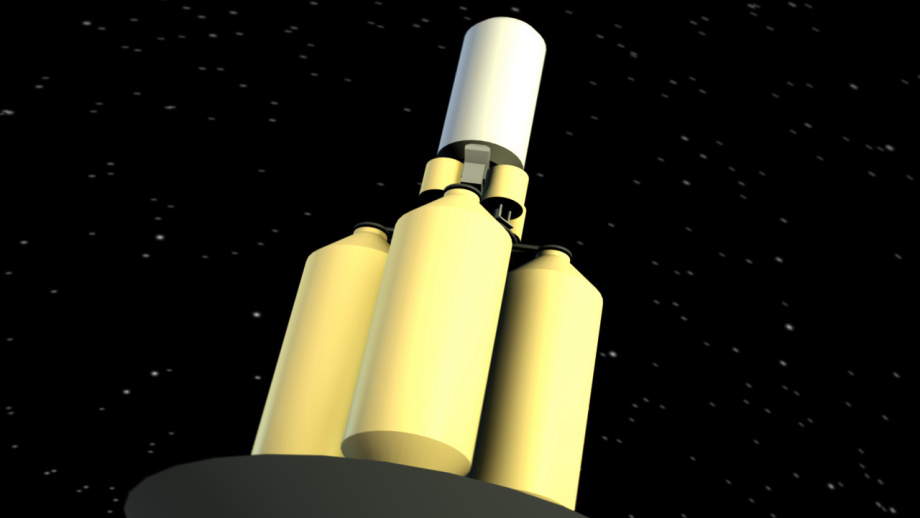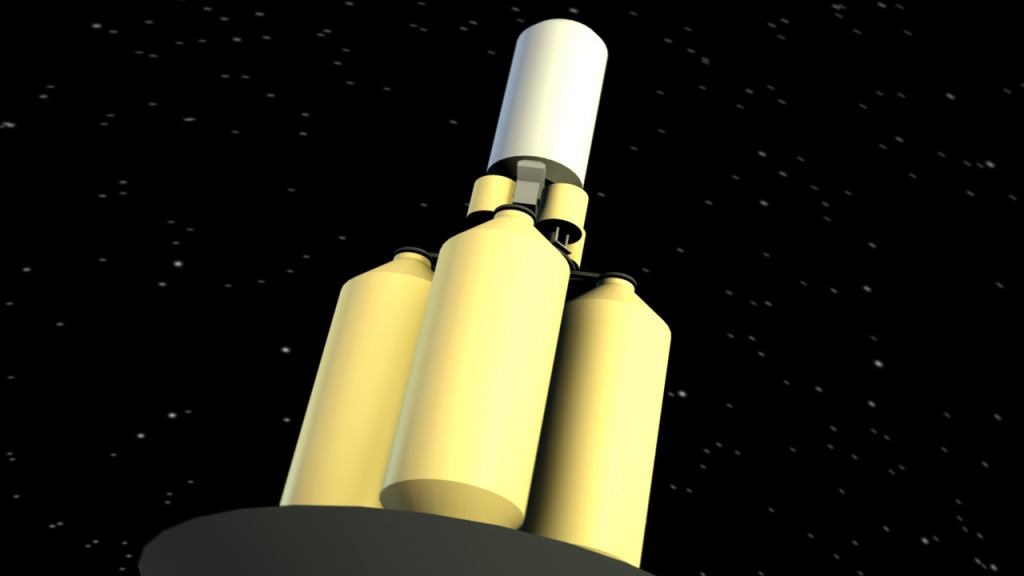This week I learned a lot of new things about modeling in Blender — basic stuff like how to properly use edge loops and how to set up path-based animations. And I created a nice fly-around video of my LTS Shuttle model.
After years of tinkering with it, I’m finally taking learning Blender a lot more seriously, and this week I made some nice progress. I’m still mostly using Blender 2.4, although I do have Blender 2.5 installed as well. There’s a great deal to be done with “edge loops”, which also mostly require that you are working with quads instead of triangles. I also learned how to do shape keys for lip-sync animation and how to set up path-based animation for objects or for the camera.
That’s very useful stuff. It looks like we’ll probably be doing a lot of path-based animation, especially in the pilot episode. We have a lot of spacecraft exterior shots that will need nice, smooth, Newtonian motion. It also seems to be a good way to rig staged rockets (thanks to “revolt_randy ” from the Blender Artists forum for this recommendation).
Meet the Lunar Transportation System “Moon Shuttle”
Clearly our colonists must get to the Moon somehow. And indeed, having active bases on the Moon implies the existence of some kind of supply chain to provide regular transportation — or at least somewhat regular. The LTS is analogous to the STS (Space Transportation System
— the official name for the US “Space Shuttle”), and plays a similar role in space in the setting of Lunatics. Access to the Moon in 2040, is thus about as difficult as access to Low Earth Orbit is today (or was awhile ago — as of this writing, the Space Shuttle program has been shut down and the replacement commercial carrier spacecraft have not yet replaced them, which leaves us with just the Soyuz system).
This week, I used my new Blender skills to create a fly-around animationof the lo-fi “LTS Shuttle” model for our feature video:
I know the model is still fairly simple and looks pretty much like plastic. Of course, this is not the final model that will be used in the production. This is a lo-fidelity model intended to be used for finishing up our storyboards and creating animatics of some of the trickier shots — it’s really for pre-production.
I’m a little concerned that the size isn’t correct on the lander’s fuel tanks — the lander looks awfully small compared to its payload. I’m going to have to do some engineering math to see how far off I am — I expect to deal with that in the production model. It won’t be far enough off to make the storyboards inconsistent, though, so it’s not terribly important right now.
The LTS shuttle uses an aerobraking shell, for returning to Earth. I did the math on this, and it’s absolutely worth the extra weight
(especially if it is very lightweight, which can work if it’s designed to work only at high altitude, and not for actual reentry). The orbiter tanks are designed to be replaced like cartridges, using the LTS Service Platform which is part of the Space Station in this era. The tanks are lifted up to orbit on heavy lift “LTS Logistics” flights, stored under a sun shield and then loaded onto the shuttle for flight. There have been some papers recently on longer-duration storage of LOX/LH2 on orbit, which should make this practical.
Transferring the whole tank over to the shuttle seems like a huge savings of operational costs over trying to transfer fuel from tank to
tank — and if you think about it, there’s no reason not to. The tank on the logistics flight can’t be returned to Earth and refilled, so you’re
clearly going to let that tank burn up in the atmosphere, regardless of whether you transfer the fuel or not. So why bother saving the tank on
the shuttle and throwing away the brand-new tank on the launch vehicle? Why not instead replace the whole tank, so the tanks are always new, and throw the old used tank away instead. And of course, you save the effort of transferring the fuel and eliminated losses. Also, if the
opportunity arises, you can land the empty used tanks on the Moon with the same lander (they’re big, but they’re light when empty).
In fact, this solved a problem in the colony design — clearly the LOX/LH2/Water tanks on the colony for the fuel cell system can be reclaimed LTS tanks.
No doubt a few engineers will be disappointed with LTS — it could be argued that building an “interplanetary spacecraft” (as Robert Zubrin once put it) is not the smartest way to get people to the Moon (or Mars). But there are clearly operational advantages to such an approach,
and it’s not hard to imagine NASA Industrial Complex politics pushing for this kind of boondoggle solution over the “spam-in-can” approach. Of
course, we’re not promising to show the best way to colonize the Moon in Lunatics — just a way that would probably work! (We want “realism over idealism”).


